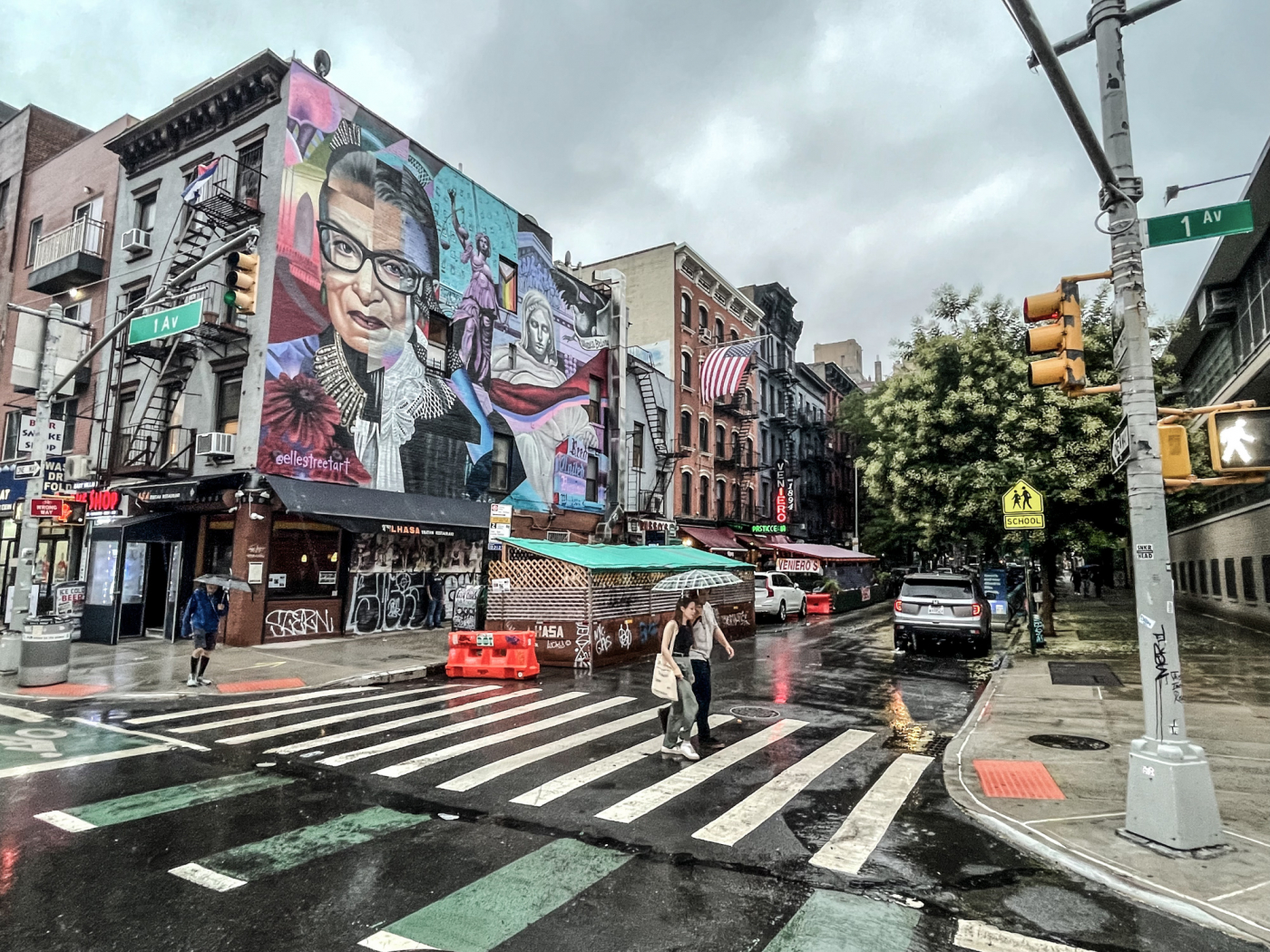It was news of the Baroness leaving the East Village that seemed most surprising. “You need latex!” insisted the legend across the chalk board on the sidewalk outside her shop, two doors down from me, for the last 13 years. As it turned out, I never did want a pair of claret red shiny opera length gloves or a fetish nurse’s mask, but I found it reassuring that I could get them made to measure if the desire arose. Now she has decamped to France for a new life. Gem Spa, which served egg creams on the corner of St Marks Place for nearly a century, has also gone. As has Big Gay Ice Cream Shop, and Jules, with its red leather booths, fabulous steak frites and obtrusive live jazz. I thought the most emotional departure I’d experience in the last few years would be the end of the Pyramid Club, which represented the glory days of the 1980s club scene (a commemorative documentary is in the works), but when Ink, one of the best magazine and newspaper vendors in the city was evicted this summer, I could feel something in me die. That, and news that my friend is being evicted from his shoebox of a flat on 11th Street, so that the landlord can charge $4k a month to some fintech bro who thinks Alphabet City is still where it’s at, when in fact they’ve just colonised the area and turned it into the Midwest that they fled for the big city.
There’s a hideous, vicious evangelical attitude at play – hardship seems to be seen as a moral failure and punishable offence
The East Village in downtown New York is changing. But that’s what happens here. Things go, things come, then go again. But they’re going faster and faster. During the worst of the pandemic a new Thai restaurant, Soothr, opened close to 3rd Avenue, and is now one of the best dining rooms in the city. Constantly buzzing, it is chic, fun, affordable and does killer Tom Yum. I recently went three times in the same week, working my way through its gem-themed cocktail list. It’s pure joy. But it’s now a rarity.
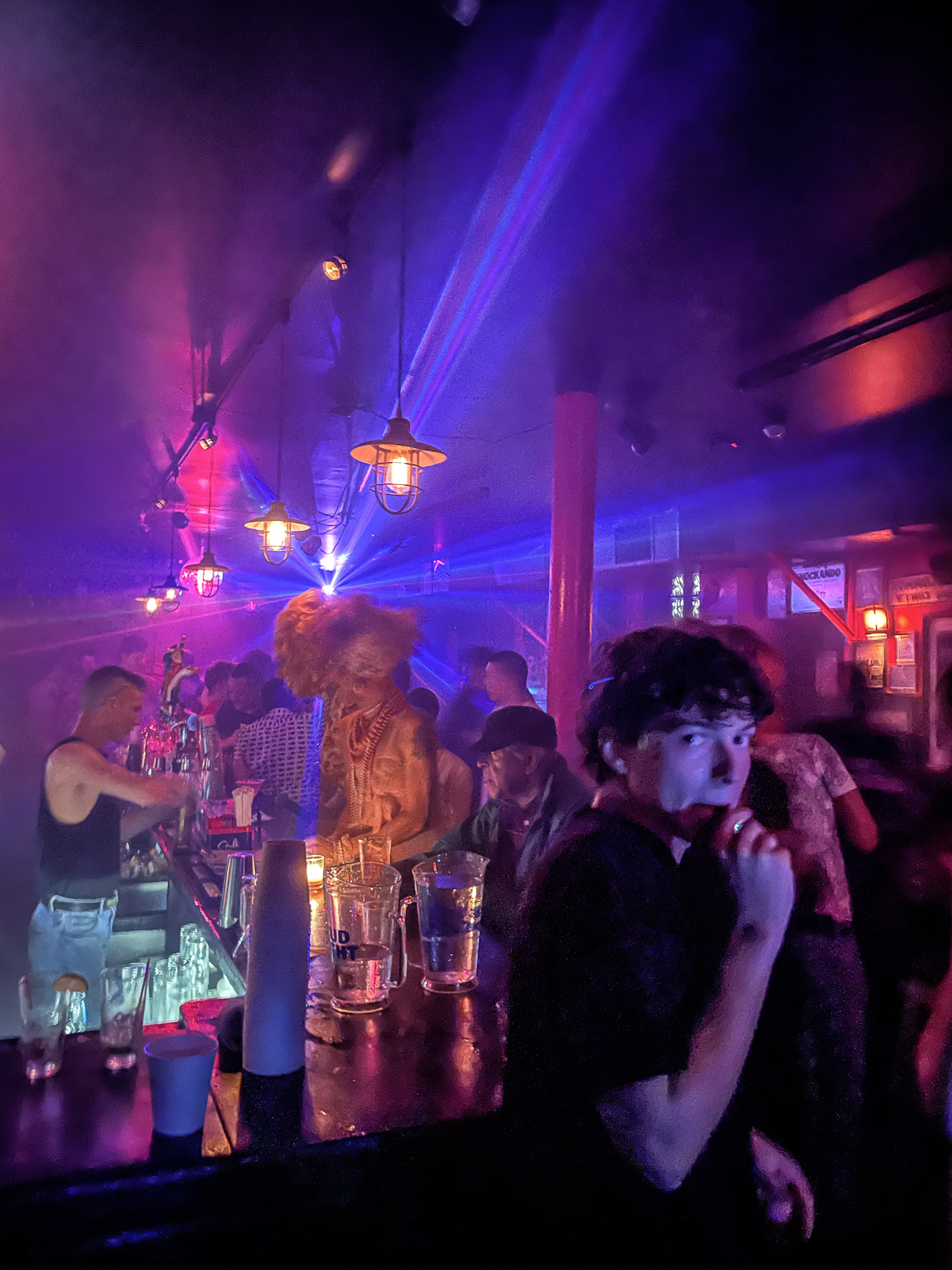
The Phoenix
I have been living part time a few blocks from Soothr for years, afforded the privilege by periodically swapping my flat in Hackney with a friend who has a wonky steam-heated 19th century tenement apartment between Avenues A and B, and a lovely tuxedo cat that used to belong to the local drug dealer. Much of the East Village as I know it is still there, but it’s dying. Still, with its resonant history, dive bars, murals, and eccentrics who take their pet pigs for a walk down Avenue A of an afternoon, it remains one of the few parts of the city to retain its soul. But it’s also become an unsettling mix of the feral and privileged. The drug problem around Tompkins Square is a nightmare, and the police regularly and cruelly confiscate the tents of the homeless. Walking down E13th St recently, I encountered an entirely naked black transwoman, one of the most vulnerable individuals in society, crouched and urinating on a car bonnet, screaming obscenities at passers-by. New York offers no safety-net. There’s a hideous, vicious evangelical attitude at play – hardship seems to be seen as a moral failure and punishable offence.
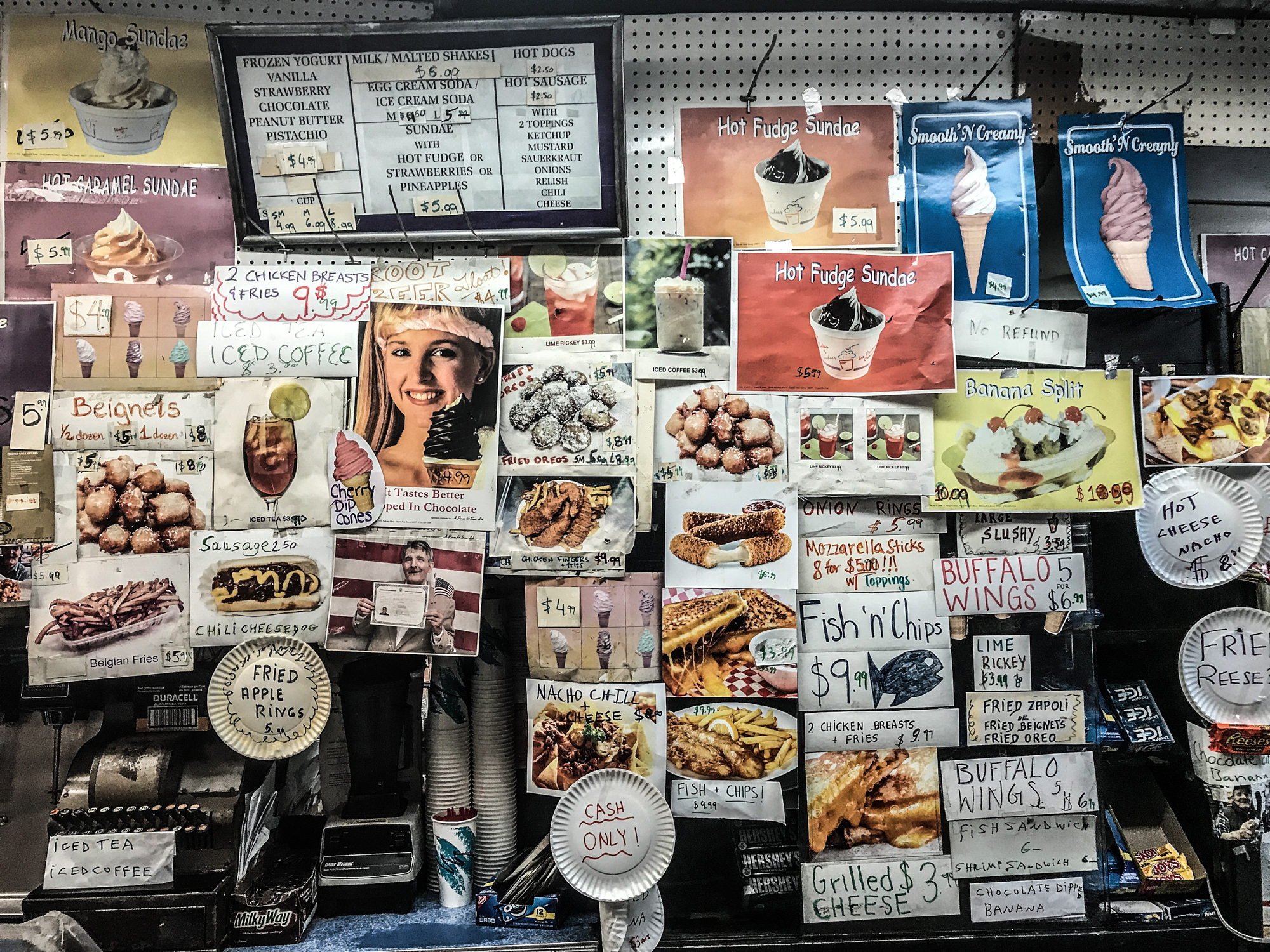
Ray’s Candy Store
The borders of the disintegrating East Village are still clearly defined: East 14th Street to the north, the Bowery to the west, Houston Street to the south and the East River to the… east. That said, anything further across the island than 2nd Avenue feels like hinterland. 90-year-old Ray still serves up beignets at his eponymous candy store on one side of the Square, and SOS Chefs sells the most rarefied and artfully packaged herbs and spices on the other (need some crushed grasshoppers or merlot salt? Look no further!). A little further down Avenue B is Sunny & Annie’s Deli, home to the best sandwiches on Earth, each named after a favoured Democrat politician or the year in which it was first served. Manitoba’s punk bar across the street is much missed.
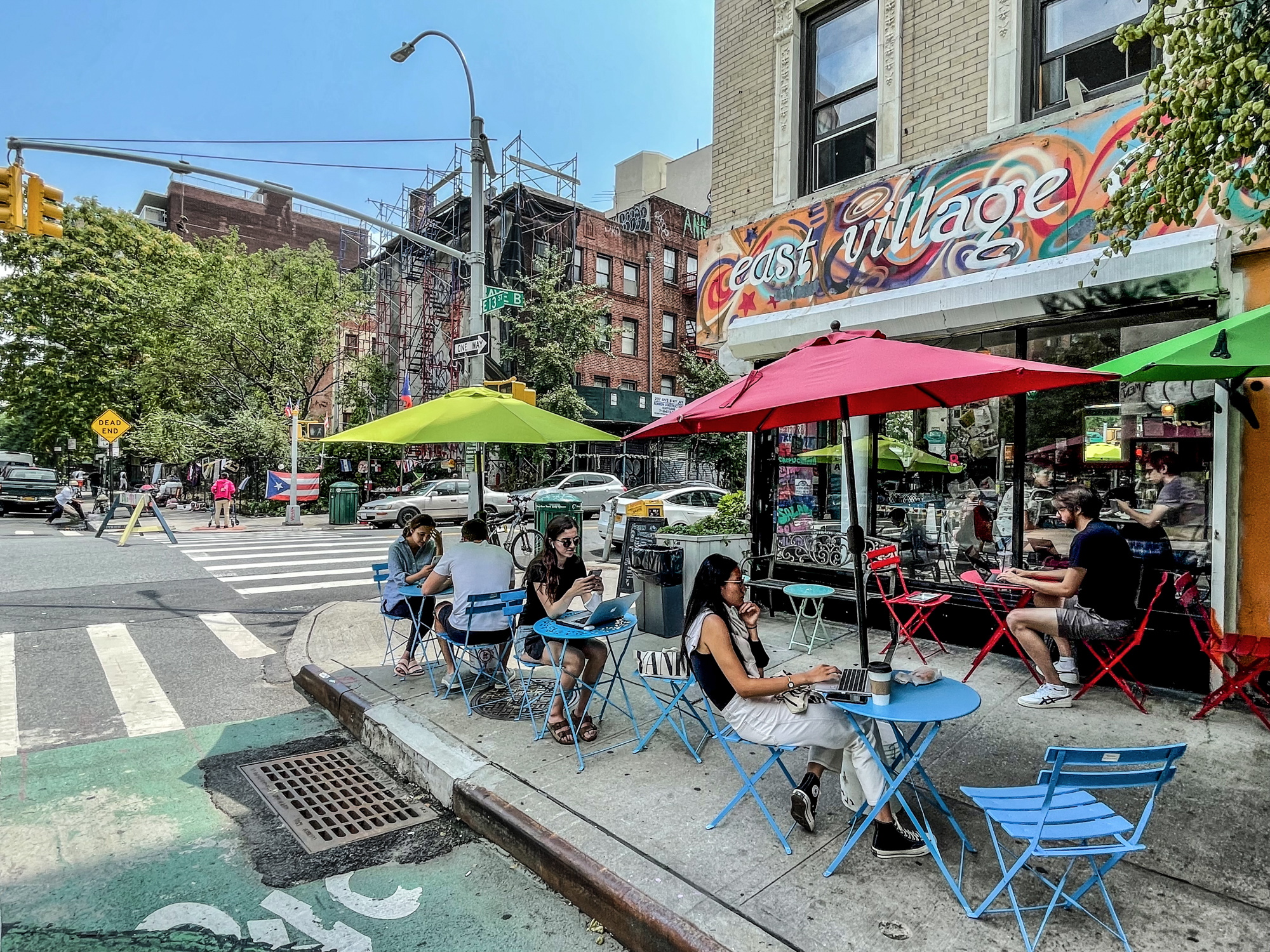
E13th St and Avenue B
This area was originally settled by Germans, then Ashkenazi Jews, then later Ukranians, and most recently by frat boys who want to feel cool by association. Arguably the most famous restaurant in the area is Veselka on 2nd Avenue, which has been serving up Ola’s Famous Veal Goulash and various pierogis since the 1950s. It was Veselka that served as a backdrop to the area when it sank into the hellscape of the 1970s, and when the tenement I live in part time was on a block occupied solely by drug dealers and their junkies, who would wander along, shove their arms through holes smashed through the brickwork, and get shot up with smack. Later in the decade, and through the 1980s, the area was colonised by artists emboldened by the promise of cheap rent. It was this era, defined by Patti Astor’s long defunct FUN Gallery, that exhibited work by Keith Haring and Jean-Michel Basquiat, as well as the local radical artists who railed against the political vacuum around the AIDS crisis – including David Wojnarowicz – that fashioned a style and mood that continues to exist today. But it’s not what it was, by any stretch of the imagination. There is a Starbucks on Avenue A, and a branch of Target at the top of the street, but many die-hards are sticking it out, and there’s still a sense of community here – most visible in the gardens that have sprung up on corners and the site of demolished tenements. Most are accessible to the public, and many are ringed with junk sculptures that look like pagan adornments, or totems from Derek Jarman’s garden in Dungeness.
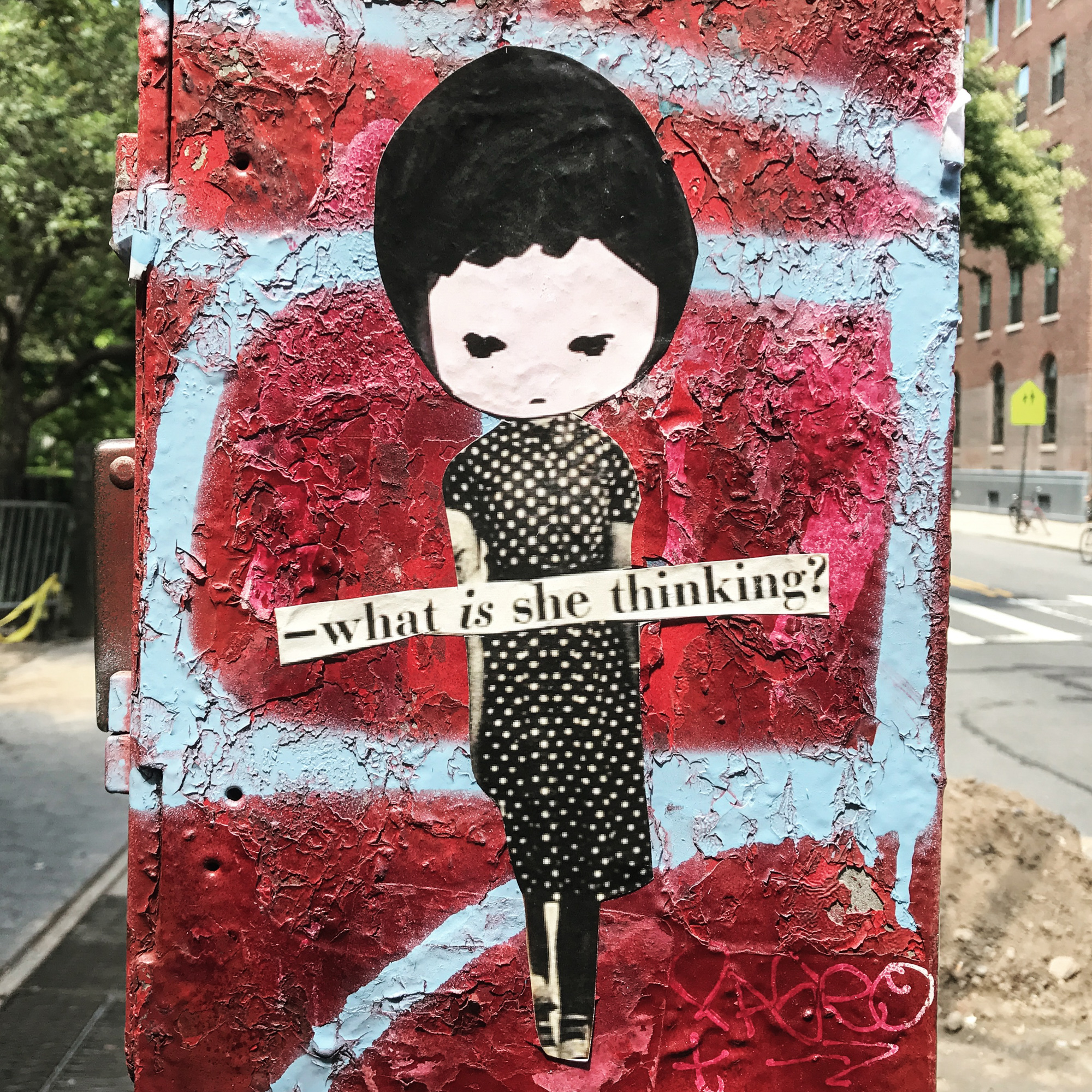
Wheatpaste work by PhoebeNewYork
The East Village is still rough around its edges and cherishes its punk past, but cheap it is not. The Holiday Cocktail Lounge at 75 St Mark’s Place looks straight out of a scene from Desperately Seeking Susan, but now it charges $17 for a Manhattan (before tip). The vintage Diana Ross and Boy George dolls and cool studded vintage boots of Love Saves the Day are now a LONG time ago. The place is also best avoided on Friday and Saturday nights, when the Tri-state teens with fake IDs descend like tipsy Ralph Lauren-clad locusts.
Every weekend the area is a boozy theme park for blow-ins, but it’s the residents that have made it what it is, or was. Allen Ginsberg lived out his last days here, at his home on East 14th Street; Alan Cumming is a local and runs his own queer bar and cabaret venue – Club Cumming – and you’re still likely to bump into local Natasha Lyonne, who based most of both Russian Dolls in the neighbourhood. Looking for more on-screen history? The steps up to 226 E13th St is where the blood drenched finale of Taxi Driver plays out.
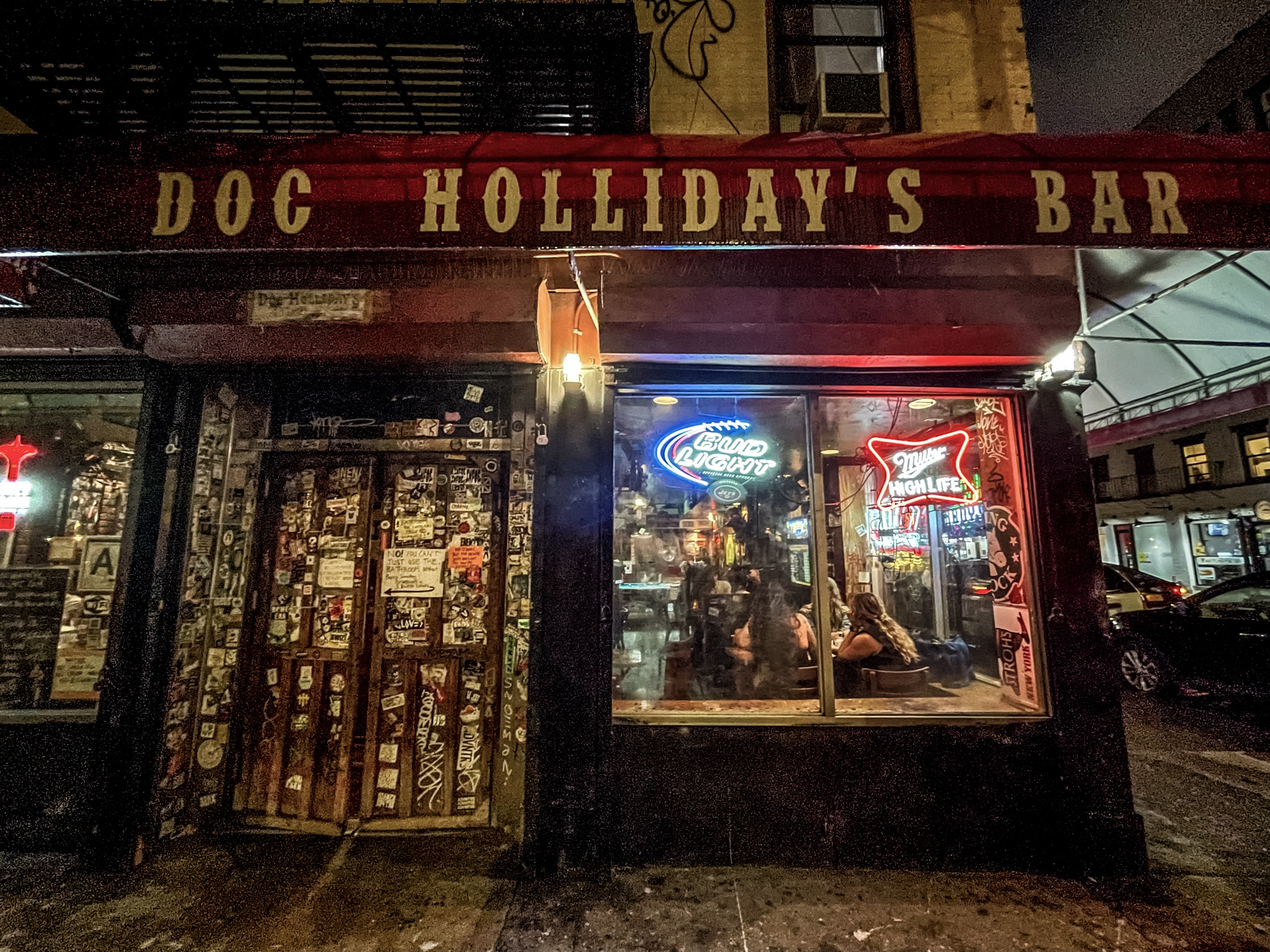
Doc Holliday’s dive on Avenue A
Along with the expansive, elaborate murals of Run DMC, Joe Strummer and Ruth Bader Ginsburg, and the cute wheatpaste figurative art of Libby Schoettle, who tags her work as PhoebeNewYork, it is the rows of vintage clothes stores, indie retailers and the patina of dive bars that define the East Village. I feel immense reassurance that Brenda Breathnach, the larger-than-life Irish owner of the queer Phoenix Bar, has managed to keep her precious community resource alive. My favourite bar remains The Library, at the south end of Avenue A. Its battered leather booths are held together with duct tape, there’s always vintage punk playing on the jukebox, an indie horror film being screened on the back wall, and a portrait of HP Lovecraft surveys the scene from a side wall. For many regulars, it feels like home.

The Tompkins Square Halloween Dog Parade
One of the things that has kept the East Village preserved to some degree is the lack of hotels in the area. Every block in the West Village seems to have a luxury boutique hotel on it, but there’s relatively little on the east side. Many locals protested against the demolition of a row of Beaux-Arts buildings opposite the Webster Hall live music venue to make way for a branch of the Moxy, but what’s done is done, and it opened in late 2019. Superstar designer David Rockwell created the ice-cool interior at the hotel, including the dramatic Cathédrale restaurant in the basement, with a bar attached to it decorated with signage from downtown’s past glories: Long gone hotspots like Save the Robots and The Palladium. While a lot of the best low-key restaurants have buckled from financial pressure, the basement of the Moxy is rammed, with people eating crudo and black truffle fettucine while Talking Heads and Blondie’s greatest hits play. Rockwell also designed the new Equinox hotel over in atmosphere-free Hudson Yards, where you’ll be lucky to get a room for under $800. I know where I’d rather be: a two minute walk from my favourite Aussie diner Ruby’s, and 12 blocks from happy hour at the Library bar, where drinks are two for one and there’s always antics ahoy. But the old East Village is definitely on its last legs. When there was a fire at my beloved B-Side bar recently, it felt like an omen. Ink closing in the same week really hurt. There was also news that much loved gay bar The Boilerhouse was having to close up shop, and Theatre 80 on St Marks Space was evicted in April. I read the EV Grieve blog daily, which is now more of a doomscroll than a celebration of the area. Fundamentally, the rents are now heavy enough to break the back of any camel in the creative industry. So, when everyone with rent stabilised flats finally dies or throws in the towel, that’s the end of it. But it was fun while it lasted and it’ll live on in legend, and of course in sterilised nostalgia for the kind of white twentysomethings who bore on about which Ivy League college they went to, years (and subsequently decades) after they left. C
Mark C. O’Flaherty is the founder of Civilian and the author of Narrative Thread – Conversations on Fashion Collections, published by Bloomsbury
